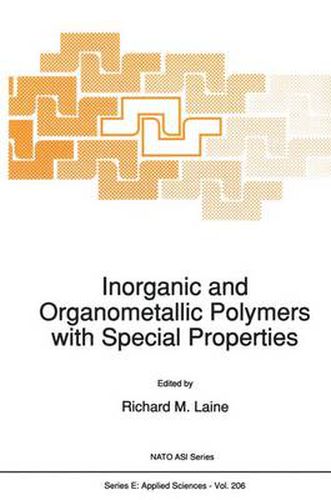Readings Newsletter
Become a Readings Member to make your shopping experience even easier.
Sign in or sign up for free!
You’re not far away from qualifying for FREE standard shipping within Australia
You’ve qualified for FREE standard shipping within Australia
The cart is loading…






This title is printed to order. This book may have been self-published. If so, we cannot guarantee the quality of the content. In the main most books will have gone through the editing process however some may not. We therefore suggest that you be aware of this before ordering this book. If in doubt check either the author or publisher’s details as we are unable to accept any returns unless they are faulty. Please contact us if you have any questions.
Only in the past decade, has the scientific and industrial community come to realize the potential utility offered by inorganic and organometallic polymers (lOPs) for a wide variety of applications. This potential is especially important for applications requiring multifunctional polymers, e.g. for smart materials, nanotechnology, biomimetic systems (neural networks), photonics, etc; lOPs with special properties. The breadth of perfor- mance requirements for the individual areas of application is enormous as are the problems pertaining to generating low cost, high performance, processable lOPs. This book represents the third in a series of books we have edited on inorganic and organometallic polymer chemistry (1. Transfonnation of Organometallics into Common and Exotic Materials, NATO ASI Series Vol 141. 2. Inorganic and Organometallic Oligo- mers and Polymers, Kluwer publications). In this series, we have attempted to identify important trends that help to define for the reader; the potential scope of lOP science as well as the problems that must be surmounted to realize this potential. The focus of the work presented in the following chapters is primarily on the relationships between lOPs and solid state materials with special properties, e.g. conducting, magnetic, photonic and structural materials.
$9.00 standard shipping within Australia
FREE standard shipping within Australia for orders over $100.00
Express & International shipping calculated at checkout
This title is printed to order. This book may have been self-published. If so, we cannot guarantee the quality of the content. In the main most books will have gone through the editing process however some may not. We therefore suggest that you be aware of this before ordering this book. If in doubt check either the author or publisher’s details as we are unable to accept any returns unless they are faulty. Please contact us if you have any questions.
Only in the past decade, has the scientific and industrial community come to realize the potential utility offered by inorganic and organometallic polymers (lOPs) for a wide variety of applications. This potential is especially important for applications requiring multifunctional polymers, e.g. for smart materials, nanotechnology, biomimetic systems (neural networks), photonics, etc; lOPs with special properties. The breadth of perfor- mance requirements for the individual areas of application is enormous as are the problems pertaining to generating low cost, high performance, processable lOPs. This book represents the third in a series of books we have edited on inorganic and organometallic polymer chemistry (1. Transfonnation of Organometallics into Common and Exotic Materials, NATO ASI Series Vol 141. 2. Inorganic and Organometallic Oligo- mers and Polymers, Kluwer publications). In this series, we have attempted to identify important trends that help to define for the reader; the potential scope of lOP science as well as the problems that must be surmounted to realize this potential. The focus of the work presented in the following chapters is primarily on the relationships between lOPs and solid state materials with special properties, e.g. conducting, magnetic, photonic and structural materials.